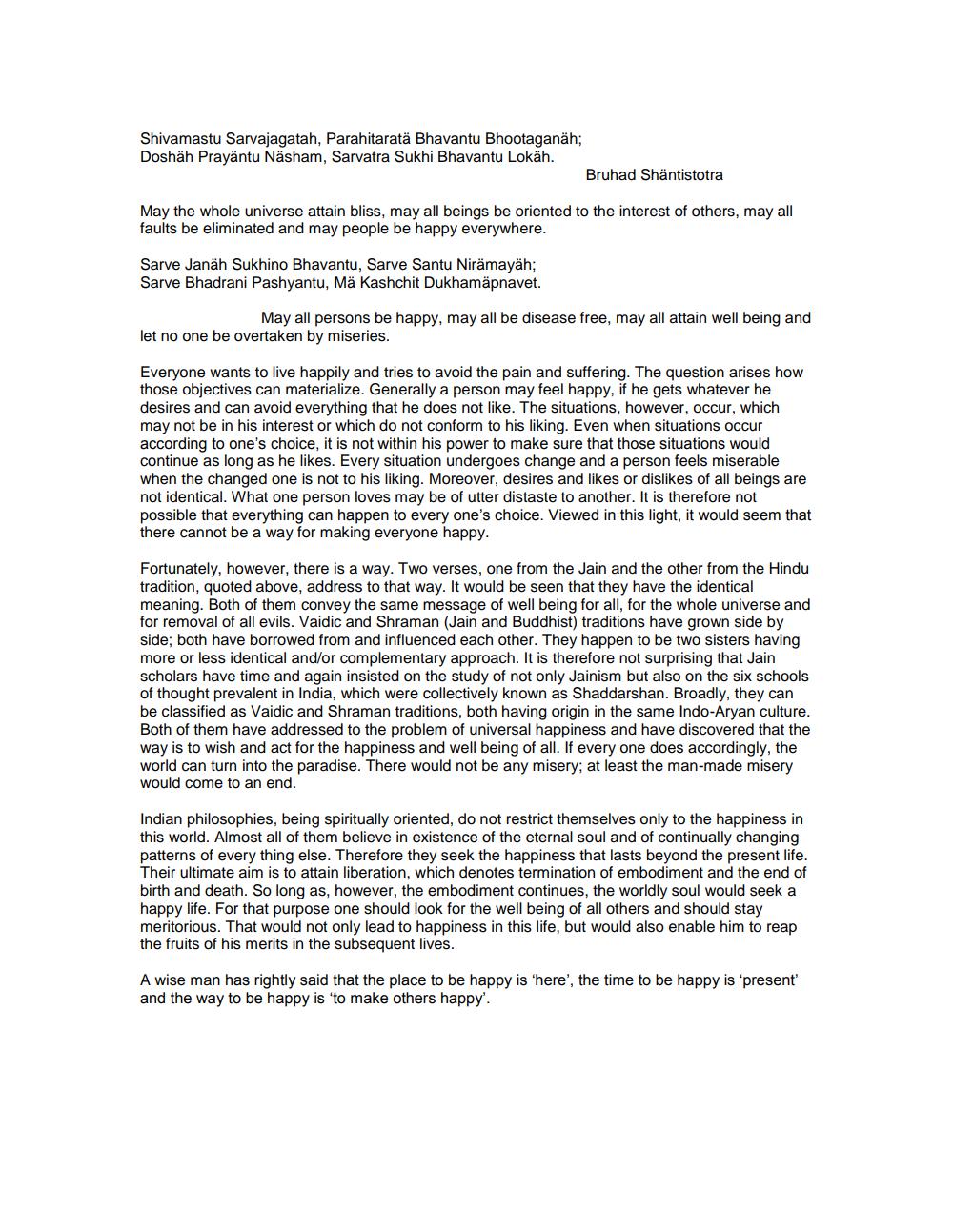________________
Shivamastu Sarvajagatah, Parahitaratä Bhavantu Bhootaganäh; Doshäh Prayantu Näsham, Sarvatra Sukhi Bhavantu Lokäh.
Bruhad Shantistotra
May the whole universe attain bliss, may all beings be oriented to the interest of others, may all faults be eliminated and may people be happy everywhere.
Sarve Janäh Sukhino Bhavantu, Sarve Santu Nirämayah; Sarve Bhadrani Pashyantu, Mä Kashchit Dukhamäpnavet.
May all persons be happy, may all be disease free, may all attain well being and let no one be overtaken by miseries.
Everyone wants to live happily and tries to avoid the pain and suffering. The question arises how those objectives can materialize. Generally a person may feel happy, if he gets whatever he desires and can avoid everything that he does not like. The situations, however, occur, which may not be in his interest or which do not conform to his liking. Even when situations occur according to one's choice, it is not within his power to make sure that those situations would continue as long as he likes. Every situation undergoes change and a person feels miserable when the changed one is not to his liking. Moreover, desires and likes or dislikes of all beings are not identical. What one person loves may be of utter distaste to another. It is therefore not possible that everything can happen to every one's choice. Viewed in this light, it would seem that there cannot be a way for making everyone happy.
Fortunately, however, there is a way. Two verses, one from the Jain and the other from the Hindu tradition, quoted above, address to that way. It would be seen that they have the identical meaning. Both of them convey the same message of well being for all, for the whole universe and for removal of all evils. Vaidic and Shraman (Jain and Buddhist) traditions have grown side by side; both have borrowed from and influenced each other. They happen to be two sisters having more or less identical and/or complementary approach. It is therefore not surprising that Jain scholars have time and again insisted on the study of not only Jainism but also on the six schools of thought prevalent in India, which were collectively known as Shaddarshan. Broadly, they can be classified as Vaidic and Shraman traditions, both having origin in the same Indo-Aryan culture. Both of them have addressed to the problem of universal happiness and have discovered that the way is to wish and act for the happiness and well being of all. If every one does accordingly, the world can turn into the paradise. There would not be any misery; at least the man-made misery would come to an end.
Indian philosophies, being spiritually oriented, do not restrict themselves only to the happiness in this world. Almost all of them believe in existence of the eternal soul and of continually changing patterns of every thing else. Therefore they seek the happiness that lasts beyond the present life. Their ultimate aim is to attain liberation, which denotes termination of embodiment and the end of birth and death. So long as, however, the embodiment continues, the worldly soul would seek a happy life. For that purpose one should look for the well being of all others and should stay meritorious. That would not only lead to happiness in this life, but would also enable him to reap the fruits of his merits in the subsequent lives.
A wise man has rightly said that the place to be happy is 'here', the time to be happy is present and the way to be happy is to make others happy'.




